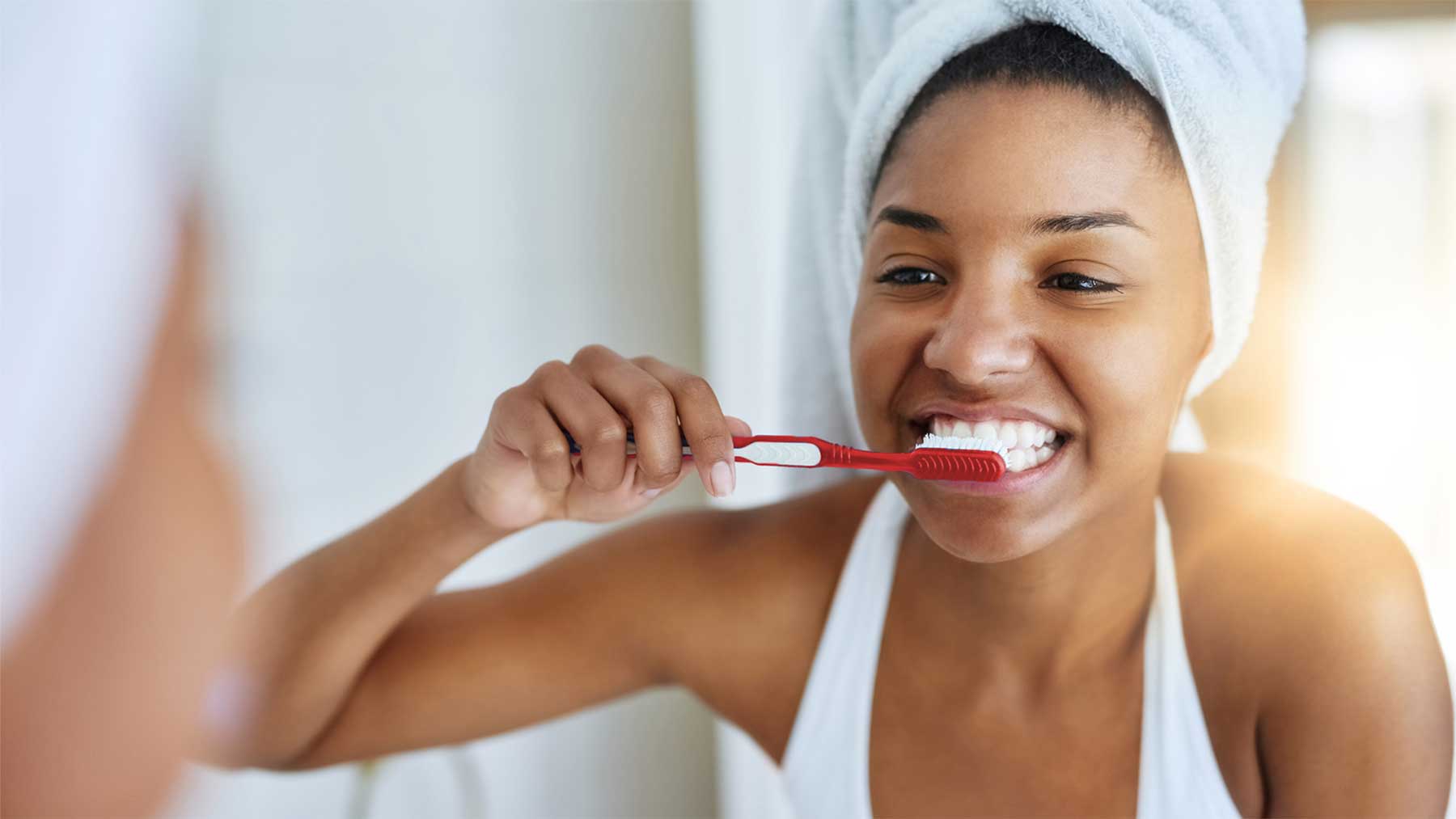5 dental fads you should brush off

Dental hacks – from charcoal toothpaste to coconut oil canker sore treatments – are all the rage right now, but these fads may actually not be a reason to smile after all.
In fact, many are ineffective, and some can be even detrimental – and dangerous – to your oral health.
So how can these latest trends affect your teeth? Before you try out that new viral trend on social media, Matthew Messina, DDS, director of the Ohio State Wexner Medical Center Dental Clinic at Outpatient Care Upper Arlington, has some advice for you to chew on.
1. Oil pulling
Oil pulling involves swishing a tablespoon of coconut oil or sesame oil around the mouth for up to 20 minutes in an effort to improve bad breath and yellow teeth. Although oil pulling is an ancient practice dating back more than 3,000 years, Dr. Messina says it is currently the most common dental fad he sees.
“Three thousand years ago, people didn't have fluoride toothpaste off the shelf, so they used what they had,” he says. “The ancient Romans used a paste of ground up eggshells and honey. Ancient Greeks tried rinsing with urine to whiten teeth.”
Despite its popularity, Dr. Messina emphasizes that there is no scientific proof that oil pulling has any beneficial effects on oral health.
“Just because a practice is old, doesn't mean it is effective,” he says.
2. Charcoal toothpaste and other whiteners
Today, Twitter and Facebook are littered with somewhat frightening videos of people lathering on chunky black toothpaste in hopes that it will transform their stained teeth into pearly whites. While charcoal toothpaste can initially whiten teeth, Dr. Messina says that over time it can erode your enamel, the outer layer of the tooth that measures slightly more than a millimeter thick.
“If you look at enamel in a high-powered electron microscope, tooth enamel looks like chain-link fencing,” Dr. Messina says. “The enamel crystal is the fence and colored stains become lodged in the spaces in the matrix.”
Traditional tooth whiteners at the dentist are safe and effective because they use a form of peroxide to bubble out the stains and leave the enamel matrix intact. However, home remedies like charcoal toothpaste, or rinses with lemon juice, carbonated soda or vinegar, are highly acidic and abrasive. They can wear down the entire enamel, leading to tooth sensitivity and even more yellowing.
“We lose some stains, but we lose enamel too. There is only a thin layer on the tooth and it doesn't grow back,” Dr. Messina says. “When it’s gone, it’s gone.”
3. Canker sore home remedies
Canker sores are small, shallow ulcers in the mouth that are common in people ages 10 to 20. They can be painful, and they make eating and talking uncomfortable. Many beauty gurus swear by coconut oil to heal canker sores, citing its anti-inflammatory properties, but Dr. Messina is skeptical about this practice.
“Coconut oil, in and of itself, does nothing to heal mouth sores,” he says. “It can coat them to reduce sensitivity to a degree, but that really isn't healing.”
If you have a sore in your mouth that has been there longer than two weeks, Dr. Messina urges you to see a dentist to have it evaluated, as it could be a sign of oral cancer. It's uncommon, but early detection leads to early cure.
4. Fluoride-free toothpaste
In the early 1900s, dentists discovered that fluoride, in regulated amounts, could help prevent tooth decay. Now, the mineral is regularly added to community water, toothpaste and mouthwash to make teeth stronger and more resistant to cavity-forming acids.
Fluoride toothpaste is much better at preventing cavities and tooth decay than a fluoride-free one.
“Look for a toothpaste with an American Dental Association – ADA – seal on it. You can be confident that a product with an ADA seal says what it does and does what it says. You have our word on it,” Dr. Messina says. “Fluoride is nature's cavity fighter, and in toothpaste, it does an excellent job of reducing decay.”
5. Grills
The trend of wearing teeth jewelry and grills seems to be waning, but Dr. Messina still warns people against the practice. Poorly fitting jewelry on your teeth can attract food debris and bacteria, which can stick in hidden and sometimes unreachable places, making bacteria very difficult to remove.
“The rate of decay under grills and the development of gum disease around mouth jewelry are very high,” Dr. Messina says.
So before you decide to coat your mouth with crystals or metal jewelry, think again.
A nice set of clean, white teeth will look a lot better, anyway.
So if today’s dental fads are ineffective, and even dangerous, how can you achieve sparkling white teeth and fresh breath? Dr. Messina says it is as simple as remembering the “Healthy Four.”
“Brush twice a day – once after breakfast and once before bed with a soft toothbrush and ADA toothpaste – floss once a day, eat a healthy diet and see your dentist on a regular basis,” he says.




